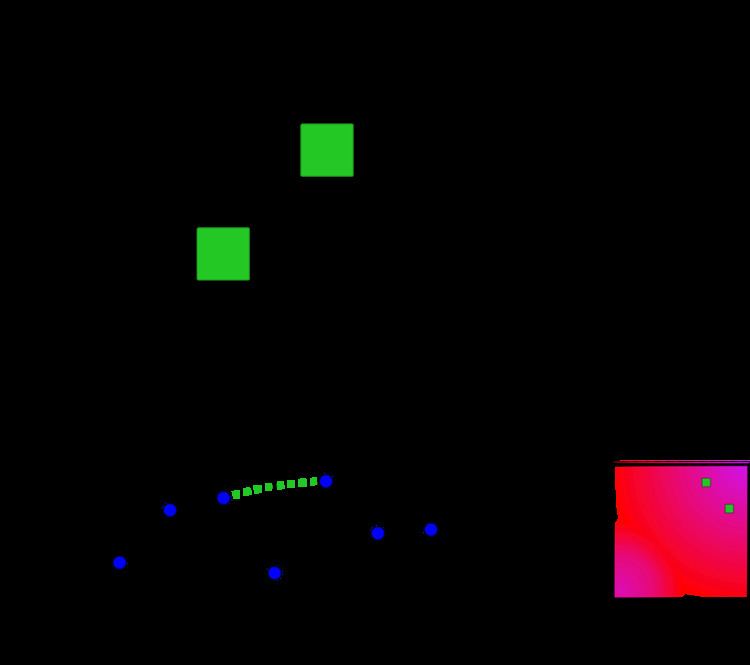 | ||
In graph theory and statistics, a graphon is a symmetric measurable function
Contents
- Definition
- Examples
- Jointly exchangeable adjacency matrices
- Limits of sequences of dense graphs
- Related notions
- References
Graphons are sometimes referred to as “continuous graphs”, but this is bad practice because there are many distinct objects that this label might be applied to. In particular, there are generalizations of graphons to the sparse graph regime that could just as well be called “continuous graphs.”
Definition
A graphon is a symmetric measurable function
- Each vertex
j of the graph is assigned an independent random valueu j ∼ U [ 0 , 1 ] - Edge
( i , j ) is independently included in the graph with probabilityW ( u i , u j ) .
A random graph model is an exchangeable random graph model if and only if it can be defined in terms of a (possibly random) graphon in this way.
It is an immediate consequence of this definition and the law of large numbers that, if
Examples
The simplest example of a graphon is
The Erdős–Rényi model can be generalized by:
- Divide the unit square into
K × K block - Let
W equalp l m l , m th block.
Effectively, this gives rise to the random graph model that has
Many other popular random graph models can be understood as exchangeable random graph models defined by some graphon, a detailed survey is included in.
Jointly exchangeable adjacency matrices
A random graph of size
Following the fundamental importance of exchangeable sequences in classical probability, it is natural to look for an analogous notion in the random graph setting. One such notion is given by jointly exchangeable matrices; i.e. random matrices satisfying
for all permutations
There is a representation theorem for jointly exchangeable random adjacency matrices, analogous to de Finetti’s representation theorem for exchangeable sequences. This is a special case of the Aldous–Hoover theorem for jointly exchangeable arrays and, in this setting, asserts that the random matrix
- Sample
u j ∼ U [ 0 , 1 ] independently -
X i j = X j i = 1 independently at random with probabilityW ( u i , u j ) ,
where
Limits of sequences of dense graphs
Consider a sequence of graphs
Related notions
Graphons are naturally associated with dense simple graphs. There are straightforward extensions to dense directed weighted graphs. There are also recent extensions to the sparse graph regime, from both the perspective of random graph models and graph limit theory.
